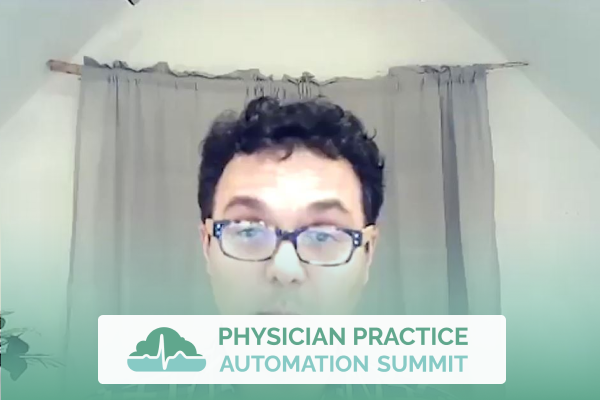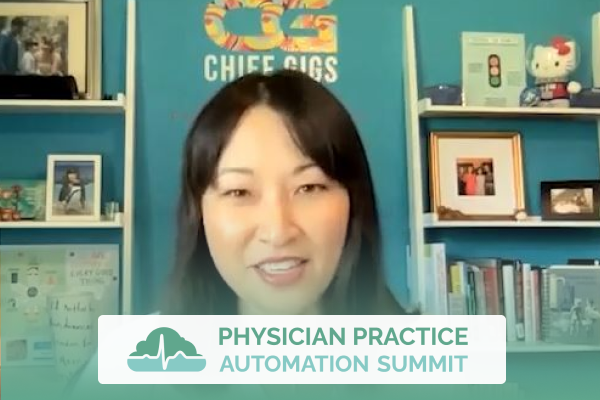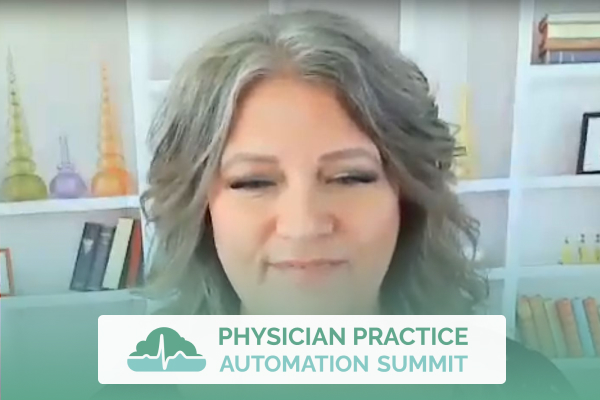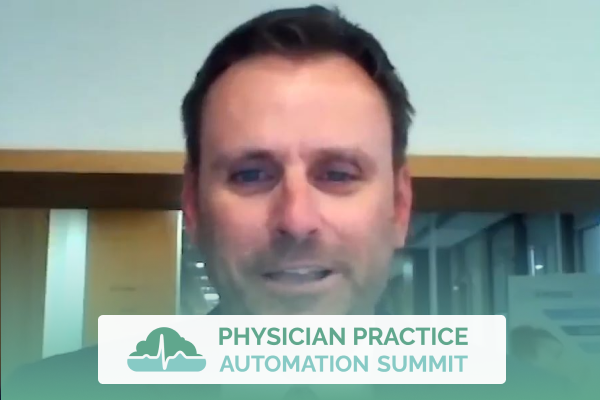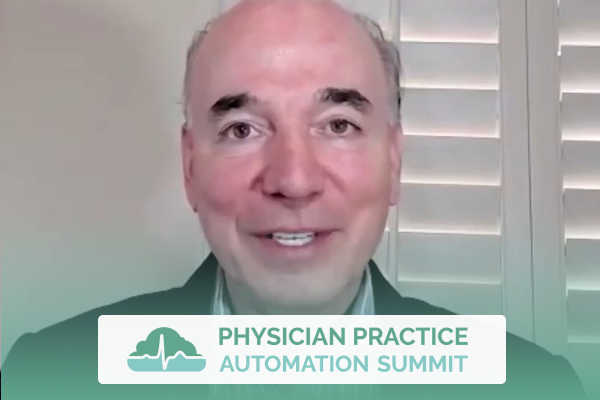Join the discussion below
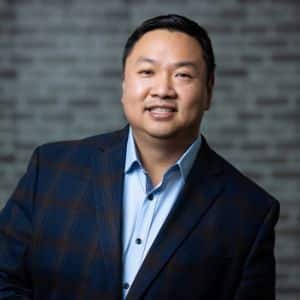
Dr. Ruan is the Founder and CEO of Texas Center for Lifestyle Medicine. He devotes his career in practicing and building systems that allow for efficient delivery of healthcare. He is a board certified internal medicine physician but also have advised with companies to improve their workflow, company culture, marketing,... Read More
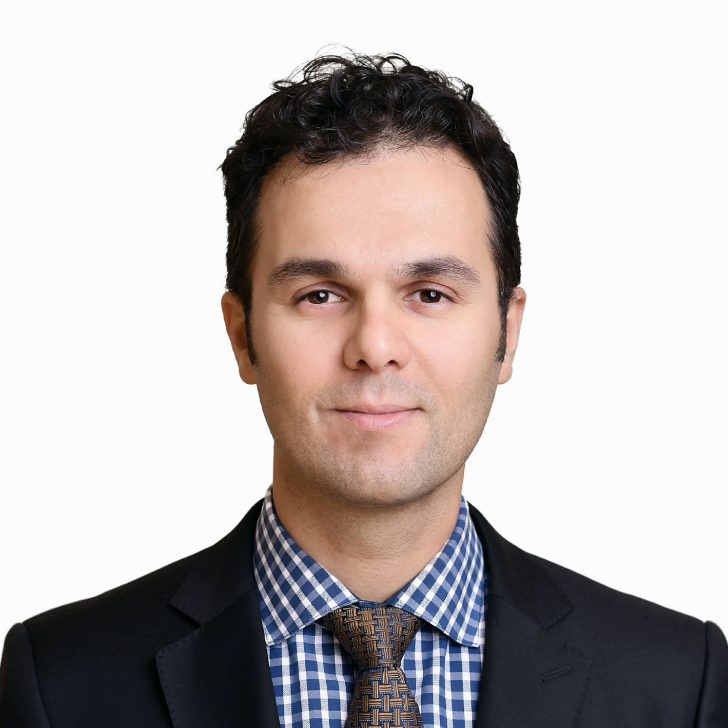
Dr. Moain Abu Dabrh trained in General Internal Medicine and Geriatrics after finishing his education and training at Tripoli University in Tripoli, Libya. He has done fellowships at New York University and Tufts University School of Medicine where he earned his Master's degree in Clinical and Transnational Research as Mixed... Read More
Cheng-Huai Ruan, M.D.
Everybody, really happy to introduce Dr. Moain Abu Dabrh who is trained in general internal medicine and geriatrics. He is part of the Mayo Clinic, originally Mayo Clinic in Minnesota in 2012, and now Mayo Clinic in Florida. He’s currently the director and of the Health and Wellness Coaching Clinic of Integrative Medicine as well as the director of Wellness and Humanities in Medicine for the family medicine residency program at Mayo Clinic. His work aims to reshape the healthcare system so that we co-pursue the goals between ourselves and our patients and really align strategies, and some really out of the box strategies, to figure out how we can propel health into the future. If there’s anybody to really talk about where medicines can potentially go, it’ll be Dr. Moain. Really happy to introduce him onto the Summit today. Moain, welcome to the Summit, super happy to have you.
Dr. Moain Abu Dabrh
Thank you, Cheng, great to be with you.
Cheng-Huai Ruan, M.D.
You know, I nerded out on a lot of your publications before we got on. And there’s just so many things that really comes to mind I really want to address on this Summit that I think it’s just really important to really understand. But let’s talk about something real quick. You know, so many people are burnt out, especially over the last year and a half. From your view, what do you think are the potential contributing factors to burnout?
Dr. Moain Abu Dabrh
So burnout is a prevalent condition, at this point one could, sadly we can say maybe it’s a pandemic in healthcare all over the world. I think it, there has been so many factors historically, especially the last 15 years, within the last year or so we know that the pandemic has just aggravated the situation and made it more pronounced. And I think one of the things that I recognize recent, that I recognized recently is potentially the relationship between healthcare, clinicians, healthcare workers, and professionals and their patients. I think we always, we feed on the fact that our patients recognize that we are there to help them to provide healing, to provide comfort. And I think the challenging circumstances that COVID-19 pandemic has provided might have changed that perception due to many factors. And I think just physicians are feeling a little bit burned out in addition to what has been happening.
Cheng-Huai Ruan, M.D.
Yeah, I agree with you. You know, this, the factors in burnout is multifold. You have professional, you have personal and all this stuff, right. But just from a clinical care perspective, right. You know, there’s something that you wrote in one of your publication is something that’s minimally disruptive medicine or care models, right. And so I was very intrigued when that was crafted. Can you kind of explain what that really means?
Dr. Moain Abu Dabrh
Sure, so we should give credit where credit is due, minimally disruptive medicine is really a movement that started around 2009 by colleagues, some from Mayo and outside Mayo and the UK and all over the world, really, specifically Victor Montori, Carl May and Francis Mayer in addition to many, many other colleagues. And the thought behind that was that how we practice and provide health care is really, historically has been diseased centric. So we’re focusing on treating the condition. And sometimes we forget to treat the person. We are coming always from a place of wanting to help our patients and their families, but sometimes we miss the full picture in the sense of that these patients have a life outside healthcare.
What we end up doing is providing the best care possible and old treatment options up to date treatment options. But we forget that there are other factors that feed into how these patients perceive health care, how they apply into their lives. Most importantly, how healthcare plans actually fit into their lives. So minimally disruptive medicine is a movement to recognize that we need to understand patient’s capacity, their ability to take on that health care and all the plans that come with it, the commitment, and also recognize the workload that comes with being a patient. So when we think about providing care to our patients we need to consider the context of their lives, their preferences, their goals, as well as their life circumstances. And really think about tailoring those healthcare plans around those so we ensure that it is minimally disruptive into their quality of life, their daily life, as well as increasing their ability to adhere to their treatment plans.
Cheng-Huai Ruan, M.D.
Gotcha, so the term minimally distrustful is really for the patient focused idea of not being too disruptive to their lives so small yeses make big changes, right?
Dr. Moain Abu Dabrh
Indeed, indeed.
Cheng-Huai Ruan, M.D.
Yeah, because when I first read that, I’m like, why would you want to be minimally disruptive? But then I figured out, understood okay, it’s talking about the patient’s lives. And so, you know, as physicians and especially in private practice, you know, how do you suggest we start executing some of that and pay attention to that in terms of what we actually can do in the clinic and with our employees?
Dr. Moain Abu Dabrh
That is a great question. I think we are challenged in healthcare by focusing on the disease and the clinical encounter and forgetting that our patients are people, stories, connections, contexts of life and there are so many things that feed into that. And I think a step, a first step, and that is not to say that physicians and all clinicians are not interested in doing that. It’s just that there is systemic and systematic challenges that this system is in many ways just prevents us or challenges us and providing that thoughtful and careful care. So I think a first step is truly a revolution in how we think we provide care. And the revolution goes on to all stakeholders. And I’m going to use that term here. I know it’s a technical term, but I’m going to use it because it really encompasses everyone involved in healthcare. It should be policymakers, it should be the physicians, it should be every single healthcare worker and nurses, APP’s and everyone as well as our patients and their family and families and caregivers. It should be a movement to demand that we need to change healthcare in a way that we are treating a person, not a condition.
Cheng-Huai Ruan, M.D.
Yeah, and I think innately, you know, most physicians, we want to treat the person, but the structure of healthcare kind of leaves us feeling a bit hopeless, right. And I think that, so the first aspect of healthcare is a volume-based business, right. And whenever I’ve volume-based business now the dollars per minute that you spend become an actual question. And so, and that itself is an issue. Another big thing, what I think is penny-pinching by the payers as well. So there’s an article that came out, I think yesterday, I was looking at LinkedIn for one of our other Summit speakers, Haley Fisher, right. The CEO of MGMA. And she’s talking about MGMA is dealing with, Hey, you know, these insurance companies are charging doctors for percentage for electronic ACH’s into the bank account anywhere from like 2% to 5%, which is gargantuan when it comes to, when it comes to healthcare dollars, right. And so something like that.
And then the other thing is that a lot of physicians aren’t really in positions in the governance structures and powers to do really anything about it. And then the fourth thing I think is that the physician patient relationship, especially during the pandemic has changed. And it’s changed from, you know, what used to happen. Maybe I don’t know, 1990, was not that long ago, was that, you know, the patients, they would go to the doctor’s office, be seen by the doctor, right. And then that’s where the first interaction is. And now the first interaction is Twitter, Instagram, Facebook, you know, Google ads or websites and stuff like that.
And so there’s a lot of, there’s a lot of, there’s a lot of preconceived notions about some of them based on their digital presence before they even go in. So some people can come in with a level of resentment and some people can come in with, okay, already prepared what they want to do. So now it’s like, I’m putting up my defenses because what I think I know about you and that creates a much bigger rift in healthcare as well.
So I think adding, the whole system needs to really understand that there’s a bi-directional communication that’s required between the patients and the physicians. And I think that missing area is, can be, can be connected through something I’m going to talk about next, which is health coaching, right. So let me ask you this, so, you know, one of your publications, which I have on my thing right here right now is talking about either minimally disruptive medicine in clinical practice, in the HIV clinic care model, right. And so what I really found interesting about that is you kind of dealing with the population that’s already at risk, but there’s social, economical disadvantages as well. So in that care model, what do you think was the, what do you think were the main factors that drive value to these patients?
Dr. Moain Abu Dabrh
I’ve had the privilege of working with my colleagues and really being embedded within a clinic that provided care for patients living with HIV and their loved ones as well, being their support network. And what we found, what these patients informed us was really amazing. And eye opening in many circumstances. We looked into what is, what can be a careful, thoughtful and supportive model that can kind of serve that minimally disruptive approach. And when we look at successful HIV care models, what can we learn from them? And what we found is something, what we called the PILLARS model and the PILLARS model is an acronym really that summarizes the points that we have learned as well that the points that we know already from research that we have done extensively through the work of MBM or a minimally disruptive medicine.
So the PILLARS model stands on the “P” as in understanding patient capacity. That is one of the main factors and the common themes that came consistently is that understanding what is the abilities and resources that these patients have so they can take on the care that is needed to live with their condition. And in this case, it was living with HIV. The “I” was understanding how can we build integrated, coordinated, supportive, and supported care teams. And that is a point in addressing burnout. When we looked at successful teams, we found it was teams that there was thoughtfulness about the time dedicated to caring for patients and how they can work all together to support each other.
And the success of that care model was that was one of the factors. The “L” in PILLARS, the second, the first “L” was looking into not only the short-term goals for patients, but also long-term goals. Understanding that our patients are not just focused on living the moment. They have stories, they have life goals, they have, they want to live their life. So really tailoring a care that supports those goals. Then understanding their life space and their living circumstances. That is an important factor that we often don’t get the opportunity or sufficiently address. Looking at the “A” is making sure that we have available expertise and up to date evidence that supports the care that we can provide to them. And then the “R” was resources that we can identify that we can support them.
Sometimes we are guilty of trying to solve it all and do it all. But sometimes we can’t. So we try to look for other resources that they can reach to within social networks, within their community that they can support their quality of care. And the last “S”, which is a point that you touched on, shared decision-making. Having and transforming clinical care and clinical settings in encounters, into encounters of conversations, not just information and education. Really allowing patients and clinicians to think, to feel, to exchange, and then to understand what is currently needed to have the work and make an informed decision based on that.
Cheng-Huai Ruan, M.D.
No, that’s great. You know, another session we actually talked about emotional intelligence, how, you know, we develop resilience through emotional intelligence. And it seems like the PILLARS model is really a demonstration of how you can execute that within clinical models for really good outcomes. And so, you know, when I read that, I was like, well, this is a pretty simplistic idea to achieve. And so, you know, for example, for us at Texan for Lifestyle Medicine, we have something that’s relatively similar with health coaches, but the way we actually communicate to the patients from the front desk to the back office, to the medical assistants, to the janitor, there’s actually a structure that’s really behind it, that we really try to train.
It’s very similar to what you’re really talking about is really trying to gather their social determines of health, like what’s really going on with them. And, you know, and that’s what a lot of physicians are asking this, man, you know, this seems like a very costly project. Um, actually, it’s not. It’s all about communication. It actually doesn’t take more time, it just takes more of an effort to teach your staff like body language, engagement, you know, actually looking someone in the eye when they come into the front desk is huge. You know, in all these things, well, you get rewarded in like either five star reviews and stuff like that. I think then I think the outcome can be quite good if we just put a little bit of effort into that level of communication. You know, when I, when we started with, when we started with health coaches a few years ago, there was, I realized it was really hard to incorporate like a coaches into a medical practice.
And it’s because I, my original thought is that no, these are just kind of add on services, right. I immediately realized that that’s probably not the best way to think about it. But the coaches are absolutely essential to getting the PILLARS, right, of their health and understanding that. And they actually became liaisons. So I realized when that part of the practice was really missing not only did it create less burnout for me, I should, it was actually very rewarding. But even the front desk, the janitors, back office, everyone participated in the joy of having the coaches around because there was such better communication with the patients and each other. So that inter communication became massively improved with the coaches. That’s not something that I really expected. And so, can you just tell us, like, you know, what do you see in terms of like intercommunication between either departments or physicians and medical assistants and how that really relates to everything?
Dr. Moain Abu Dabrh
Well, you have provided a real life example and what’s better than that. I mean, you really touched on the core thing that when we were working on the PILLARS and as I was learning more from the research and we kind of finalize that study, I looked at specifically the component of patient capacity and understanding what our patients are doing in their daily lives. What is their context of life, their goals, their preferences, that we often don’t get the opportunity as physicians to ask because of so many challenges including the limited time and everything. And the team member that always came into my mind was a health coach because we are guilty in trying to do everything. As physicians we want to do the best for our patients, our colleagues, partners, nurse practitioners, nurses, and everyone, we try our best to do.
And sometimes because of the innate challenges in the system we don’t have that opportunity to address everything. And we end up focusing on the priority at that visit. Maybe the disease, again, we go back to that. So the missing puzzle, the missing piece in the puzzle was coach, health and wellness coach. And that is the team member who can bring that background and understanding what our patients are needing, how, when they think about their life, not only from illness care, but also from wellness care.
So it’s really bringing wellness and illness care into health care settings and completing that picture and working together. And you brought up an important point, which is health coaches don’t only improve the quality of care delivered to patients, but they also improve the joy at work experience to their team members and working together and supporting their care. So it really, that is a team member that can alleviate the burden on other providers and including in clinicians, including physicians and health coaches are prime to be a major supporter of alleviating burnout in healthcare.
Cheng-Huai Ruan, M.D.
Oh yeah, absolutely. And I didn’t really understand it until I really experienced it, too. And what’s great about, you know, health coaches is now there’s a new CMS taxonomy that started April 1st, 2021, that my health coach has actually got their provider numbers, MPI numbers under. And so that it’s more recognized at this point. And there’s more reimbursable structures within the health coach system. That’s, in the models that are there that are coming out of coronavirus is actually very intuitive because there’s digital health, right? There’s telemedicine, there’s now group telemedicine.
A lot of the things that were, didn’t really use to be reimbursed now it’s like, you know, please do this so we can have a better outcome for our patients. And that’s what really, really changed, I think, during the pandemic era, you know. And so, you know, I feel like, you know, now we’re shifting into more of a patient centric environment. And even all the other speakers on this Summit are very, very much agreeable that in order to decrease the burnout, you’ve got to focus on the patient. It was a very counter-intuitive, right. And, but by focusing on the patient, you realize that you develop your own emotional intelligence that actually in turn reduces your own, your own burnout as well.
And so, where do you see medicine going in the near future? Because right now we’re in a really weird time where I think that everything is in transition. And so if I look at educational institutions, for example, my sister goes to Columbia University, she’s a fourth year medical student looking at that institution versus looking at University of Texas and there their situation right now. There’s a lot of congruences here is that a lot of the educational institutions don’t really have a structure to train like medical students and residents to behave in this current environment. What do you really think needs to change from a mindset of, from an educational institution?
Dr. Moain Abu Dabrh
I think it’s a really, it’s a movement. And when I think a good thing in healthcare is that once we see a successful model, everyone follows suit. And there is an opportunity in bridging those examples. And I think collaboration between different schools, this is a mission for all of us. And if we, if one succeeds and transfers that knowledge to others, we will all succeed. Eventually we’re serving the same mission. We want to care for our patients. We want to care for their families and replicating, understanding, learning from each other.
One thing that we’ve done in our experience with health and wellness coaching is we have been collaborating with different institutions and learning from their experiences and learning from our own experience. And what a beautiful thing it has been just to know how this service can be integrated in different settings, in different models. So in terms of education, I think we really need to think about working with our future generations. And, I think one of the things that I’m really excited about is the future generations are eager to make a change. They want to make a change. And it is our responsibility to share that enthusiasm with them. It is our responsibility to listen to them as well. Not only give them our agenda. And teaching them that patients and caring for patients is an art of healing. We need to think about improving how we communicate with our students, with our medical learners.
We need to teach them and learn from them, how they can communicate. And as you said earlier, communication now changes dramatically. There is electronic communication, not just face-to-face encounters, and there are different needs. So really being adapting, being adaptable, most importantly, being compassionate towards our patients, as well as towards each other as those who serve the needs of our patients. So really in medical education, there are so many opportunities and so many, and these, I cannot really even summarize them, but I think making medicine humanistic, thoughtful and patient-centered. And also taking care of ourselves along the way. Those are core issues that we need to address.
Cheng-Huai Ruan, M.D.
Yeah, that’s basically the values of this Summit. Exactly what it is, right. A big part of the, the automation amongst that, what we actually do is develop these systems so that we can thrive in these and propel ourselves forward. So, you know, thanks for talking to me because I think that a lot of times we as physicians, we kind of think that we’re alone in our thoughts, but whenever we put these energies out and I mean, you’re at Mayo Clinic too, so it’s not like you’re by yourself either. So there’s a lot of people that are engaged in the change of medicine. And I can’t be more thankful that you’ve come onto this Summit and shared your views. So I want to thank you so much for that.
Dr. Moain Abu Dabrh
Thank you very much for having me and thank you for your efforts, Cheng, you are truly a disruptor and in a very positive way. You, you have been, you have been a force. I have the privilege of learning from and working with and I look forward to learning more and seeing all people who contributed to this Summit.
Cheng-Huai Ruan, M.D.
Excellent, thank you so much. Have a great time.
Dr. Moain Abu Dabrh
You too, thank you very much.
Downloads

